30+ Sample One On One Meeting
-

One On One Meeting Template
download now -
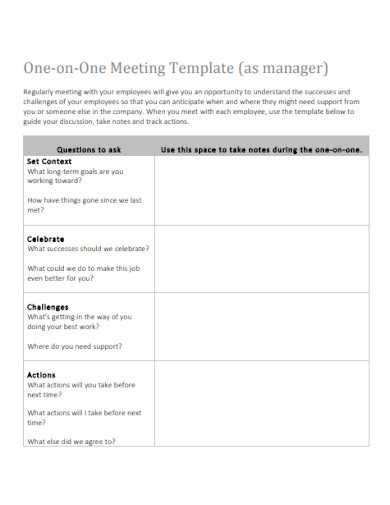
Manager One On One Meeting
download now -
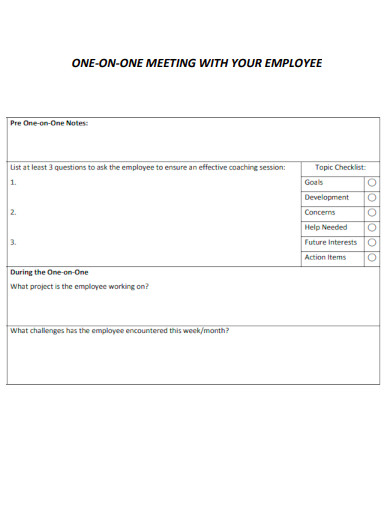
Employee One On One Meeting
download now -
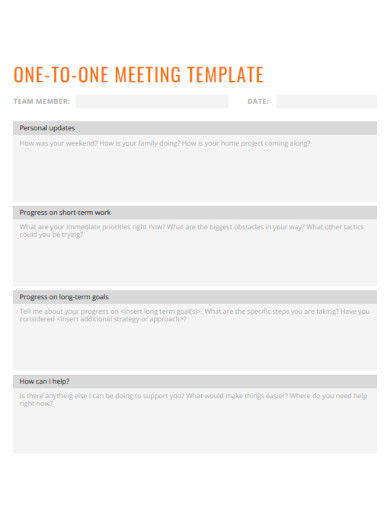
Office One On One Meeting
download now -

Team One On One Meeting
download now -
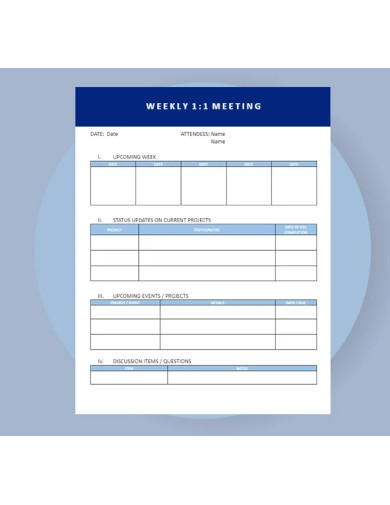
Weekly One On One Meeting
download now -

Simple One On One Meeting
download now -
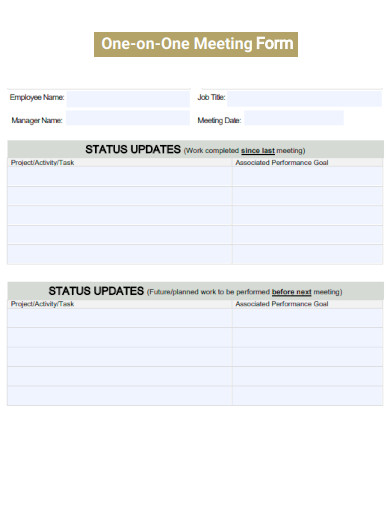
One On One Meeting Form
download now -

Business One On One Meeting
download now -
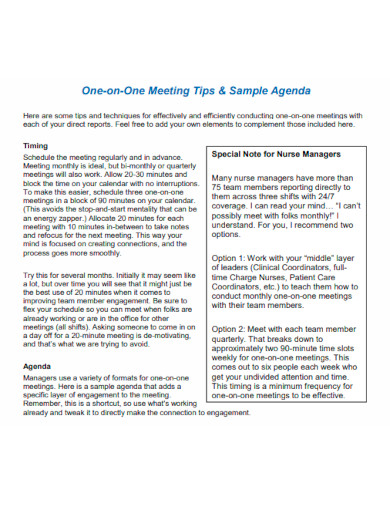
One On One Meeting Tips
download now -
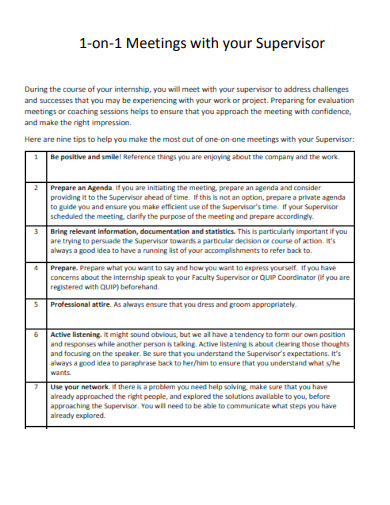
One On One Meeting with Supervisor
download now -

Coaching One On One Meeting
download now -
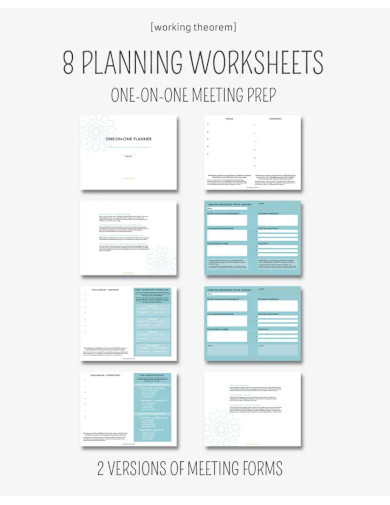
One On One Meeting Preparation
download now -

One On One Meeting Tools
download now -
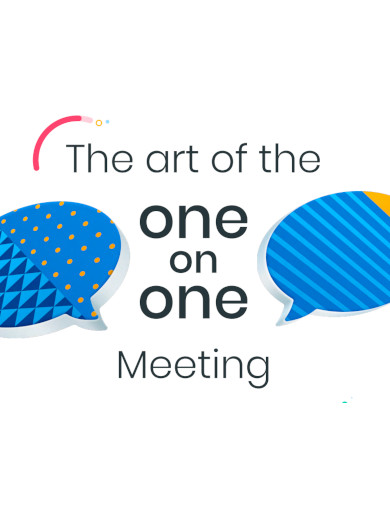
One On One Meeting Art
download now -
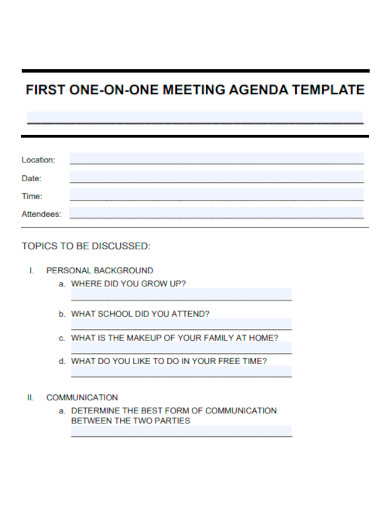
One On One Meeting Agenda
download now -
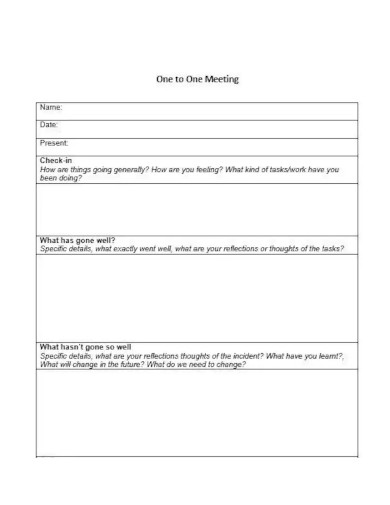
Professional One On One Meeting
download now -
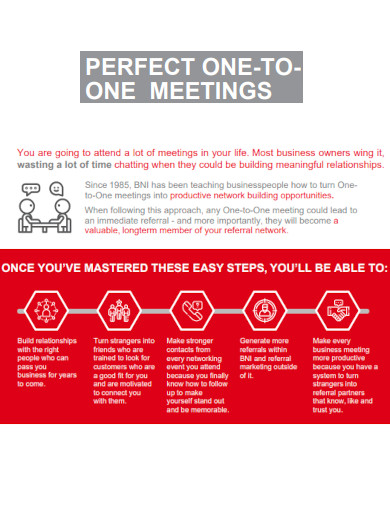
One On One Meeting Clipart
download now -
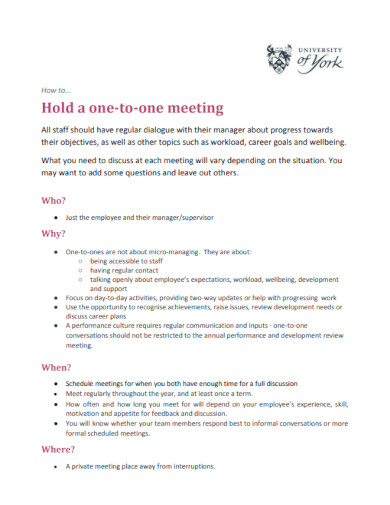
One On One Meeting Body
download now -
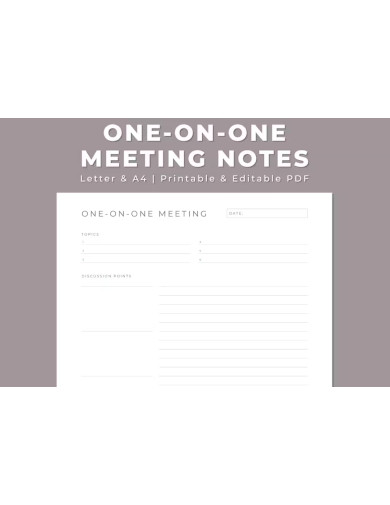
Printable One On One Meeting
download now -
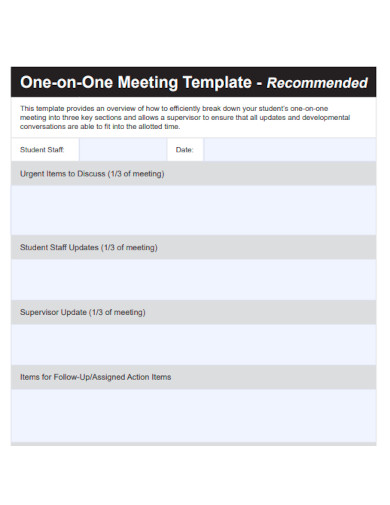
Student One On One Meeting
download now -
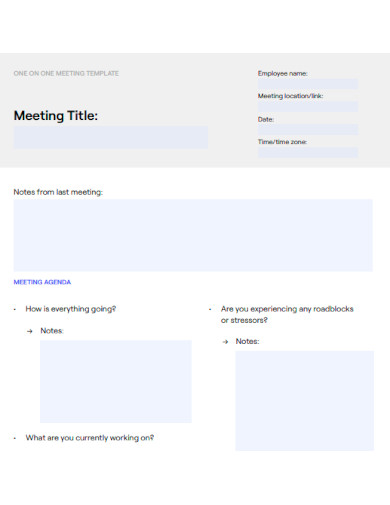
Boss One On One Meeting
download now -
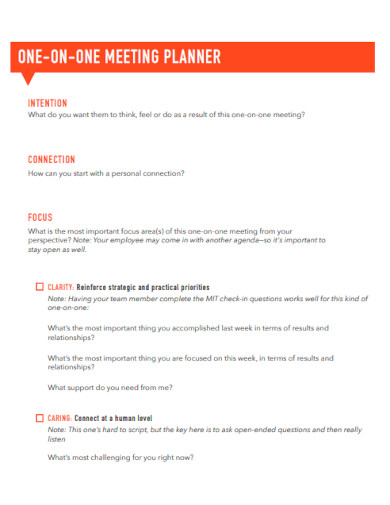
One On One Meeting Planner
download now -
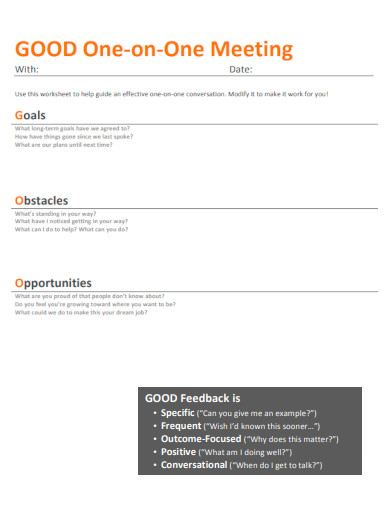
One On One Meeting Feedback
download now -

Small Business One On One Meeting
download now -

Work One On One Meeting
download now -
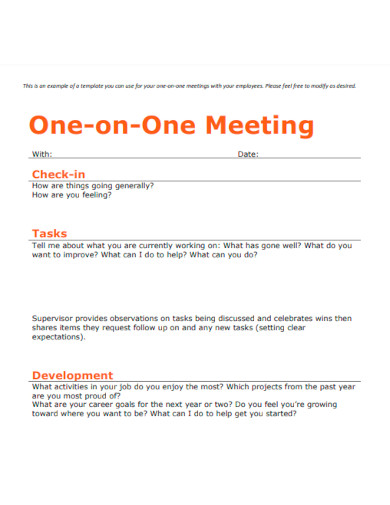
Executive One On One Meeting
download now -
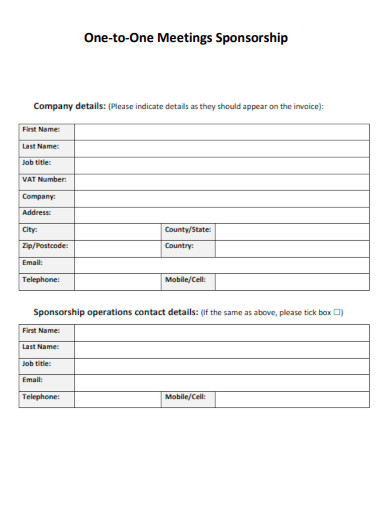
One On One Meeting Sponsorship
download now -
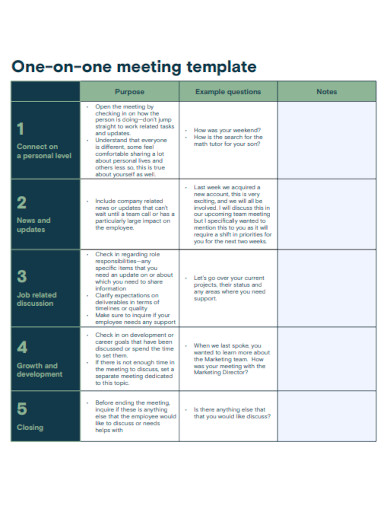
One On One Meeting Notes
download now -
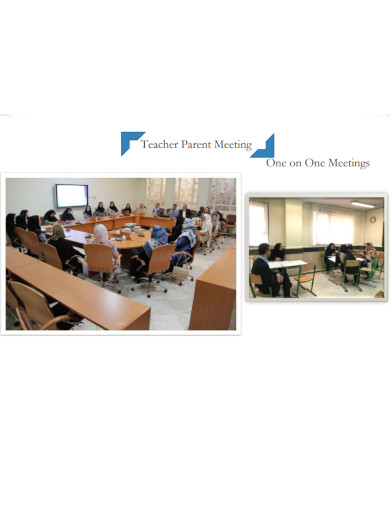
Teacher Parent One On One Meeting
download now -
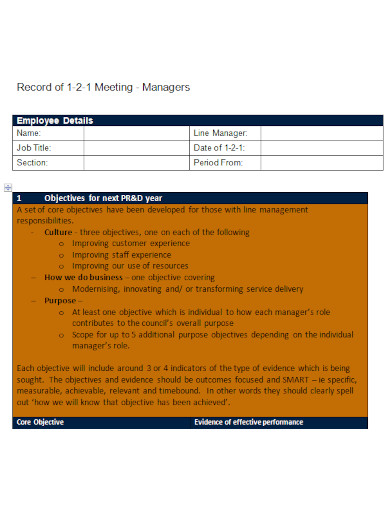
One On One Meeting In Word
download now
FREE One On One Meeting s to Download
30+ Sample One On One Meeting
What Is a One-on-One Meeting?
Benefits of One-on-One Meetings
Tips to Make Every Individual Meeting Count
How to Make Your Meetings More Effective
FAQs
What is a one-on-one session format?
What are meetings in communication?
What are the results of a meeting? What is the goal of team meetings?
What Is a One-on-One Meeting?
Everyone discusses one-on-one meetings, but there needs to be more clarity regarding their nature. For some, it is an annual evaluation; for others, it is the weekly, biweekly, or monthly meeting between employees and their managers. One-on-one meetings are a scheduled encounter between two individuals. Typically, this occurs between employees and their managers to discuss work, career, and personal development. One of the most essential methods for managers to engage and retain their teams is through one-on-one meetings.
Benefits of One-on-One Meetings
A manager needs to find time to communicate with team members. One-on-one meetings provide an opportunity to strengthen relationships with coworkers and provide regular, private feedback evaluation. You can lead productive conversations with coworkers if you learn how to conduct remote meetings. Consider the following ways in which one-on-one meetings can help enhance the workplace:
Tips to Make Every Individual Meeting Count
A manager’s most effective coaching instrument is a one-on-one meeting. These meetings aim for managers to learn vital employee information and provide timely feedback. Frequent one-on-ones allow administrators to improve their overall effectiveness and employee performance review. Here are seven strategies to help you have more meaningful weekly one-on-one meetings with your employees.
1. Don’t Ignore Them
In addition to managing their workload, managers are tasked with caring for their staff members’ professional and emotional well-being. With one-on-one, managers can set aside the time necessary to provide this kind of support, but these sessions frequently take a back seat during hectic weeks. When these meetings are postponed, an adverse chain reaction occurs: chances for advancement and recognition are lost, performance concerns may develop due to delayed or inadequate feedback, and eventually, the manager-employee relationship suffers. This separation can worsen and get more challenging to fix over time.
2. Come Prepared
Since of supervisors are attempting to support five or more direct reports, it is essential to maximize every face-to-face interaction. Instead of spending most of the meeting catching up on the highs and lows of your employee’s week, request this information beforehand so you can launch right into the meat of the discussion. Take advantage of this opportunity to practice genuine empathy by putting yourself in their shoes and attempting to comprehend what they are thinking, experiencing, and saying that they may not be speaking to you. What is foremost in their minds? What are their objectives, goals, and top priorities? This will assist in aligning your objectives with theirs.
3. Stay Present
Before you begin your one-on-one meeting, ask yourself, “Am I fully present?” Possessing a positive and influential presence is a conscious decision; the other person will notice if you multitask. Our vitality impacts those around us more than the words we use. People tend to be more present when you give them your undivided, complete attention. When you actively listen to employees during one-on-one meetings, you demonstrate that you value their time and opinions. Checking your email or instant message takes precedence over the requirements of your employees. Even if you are not physically present, people can sense your dedication and vitality through a computer screen, just as they can in person. Being present will demonstrate your awareness, reverence for their time, and genuine concern.
4. Ask Pertinent Questions
Effective coaches attend to their employees’ requirements and recognise their unique strengths. However, only some employees will feel secure sharing personal information or requesting assistance. One of the most effective ways for managers to develop and strengthen trust is by posing pertinent questions. You can also use this area to collect feedback on your managerial performance. It demonstrates your willingness to confront the truth, encourages radical transparency, and enables you to comprehend the needs of your employees and the state of your organization. Once you establish a regular cadence of asking the right questions of your people, you can proactively resolve issues, accelerate employee growth and development, and maximize every conversation.
5. Underestimate Not the Strength of Positivity
Positivity can be conveyed through expressing gratitude, celebrating victories, assisting team development, and being encouraging. Each instance of receiving gratitude or appreciation is accompanied by a fleeting emotional moment contributing to a sustained feeling of positivity. Encourage the individual. Recognize the cases where you observed the most enthusiastic, inspired, and engaged individual. Reflecting on the relationship between our emotions and work reveals what academics call inner-work life. Employees with a positive interior work life are more productive and find greater meaning in their work.
6. Offer to Help
“How can I assist you?” is a grossly undervalued question. By extending an assisting hand or seizing the opportunity to coach, you aid the development and growth of your employees. These crucial instances of collaboration contribute to the success of your organization. But offering assistance can take various forms, such as partnering to hold each other accountable, maintaining open feedback loops, and taking responsibility for the following actions.
7. Follow Up
Close loops by following up at the start of each one-on-one session and before the subsequent one. One-on-one meetings are essential, but they only function when held frequently and consistently, so treat the outcomes as a responsibility. If you keep your end of the bargain, you’ll develop a feedback cycle, a climate of accountability, and a culture of trust. Regular 1-on-1s are one of your most crucial productivity tools since they are more than just meetings. You may establish a secure environment for self-reflection and insightful questioning by using these six keys to more effective one-on-ones. The result is a conscious transition from transactional to transformational one-on-one interactions by introducing more positive, all-encompassing work habits.
How to Make Your Meetings More Effective
It is not an exaggeration to say that effective 1-on-1 meetings are essential to the success of your organization as a whole. One-on-one meetings maintain open lines of communication between managers and employees and boost employee engagement in their positions and the organization as a whole. As a manager, it is not optional to conduct effective one-on-one meetings. Certain things should and should not be done during these get-togethers if you want to ensure employees’ advancement. We’ve compiled a guide with recommendation letters for effective 1-on-1 meetings to assist you and your employees maximise the benefits of consistent communication.
1. Establish a Time for Your Private Meeting
Communicate with individual employees to schedule a convenient time for your one-on-one meeting. Rather than scheduling new meeting agenda every week, month, or quarter, schedule recurring meetings that will remain on both calendars indefinitely. By doing so, you can both plan and ensure that your one-on-one will not interfere with other work and remember to schedule the next meeting.
2. Establish a Vague Agenda Collectively
Typically, meetings are most productive when an agenda is established. This gives both parties an understanding of what will be discussed and what to expect. However, the agenda should be reasonably flexible, allowing for changes if the employee wishes to discuss additional topics. Work with your employee to determine the agenda for the meeting. One of our top recommendations is to create a shared document to add sample agenda items before your one-on-one meeting. Remember that these meetings are for the employee’s benefit, so rather than setting an agenda, allow them to contribute.
3. Develop Powerful Questions
Effective one-on-one interactions should not be one-sided. While they allow managers to provide employees with feedback, their true purpose is to establish an open communication channel through which employees and managers can achieve alignment between their goals and expectations. Therefore, ensure that your questions in one-on-one meetings accomplish the desired outcome.
4. List Your Goals and Objectives
Individual meetings are an excellent opportunity to discuss goals and objectives, including personal development goals, company goals, and team goals. By comprehending your employee’s six-month, one-year, and longer-term goals, you will be in a better position to assist them in achieving their objectives. You can also discuss how your direct report contributes to company and team objectives and discover how they see their role in the greater scheme of things.
FAQs
What is a one-on-one session format?
A one-to-one meeting template is a list of suggested queries designed to help you structure your one-to-one meetings and transform them into a space for employee empowerment and coaching. Effective, development-focused one-on-ones can enhance team culture, increase engagement and implementation plans, and foster a culture of feedback.
What are meetings in communication?
A meeting is a group communication taking place around a predetermined agenda, at a predetermined time, for a predetermined length. Meetings can be productive, ineffective, or a complete waste of time.
What are the results of a meeting? What is the goal of team meetings?
Regular team meetings are an excellent method for fostering team cohesion. When people communicate frequently, they are more in sync with the mission they are working toward and their responsibilities. Additionally, team meetings help your team comprehend its objectives, goals, and responsibilities efficiently.
By mastering the art of one-on-ones, managers can guide the development of their employees beyond what is expected of them at work and assist them in navigating the additional stressors that people face today.
